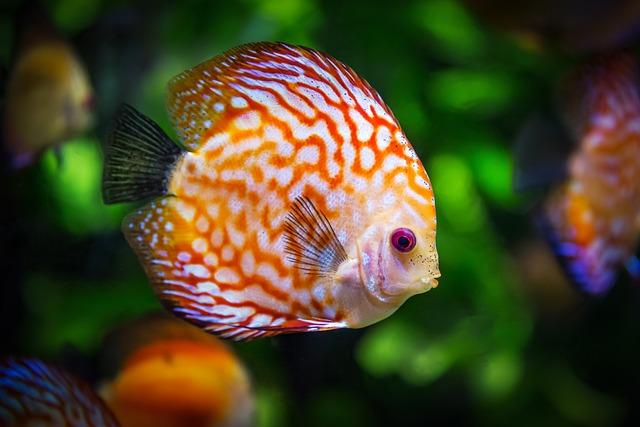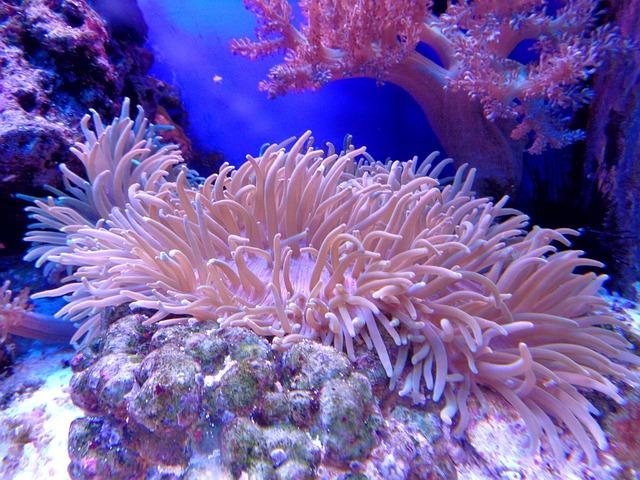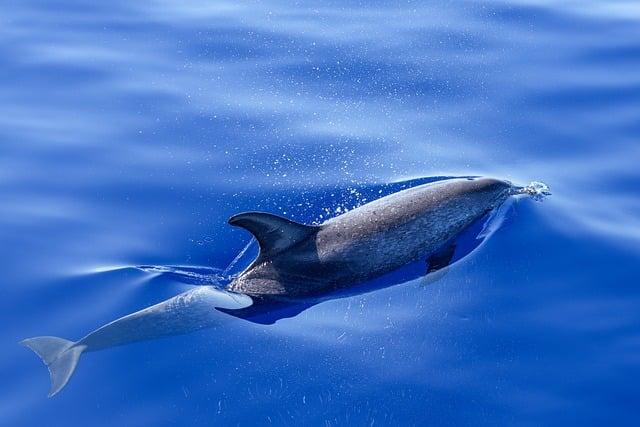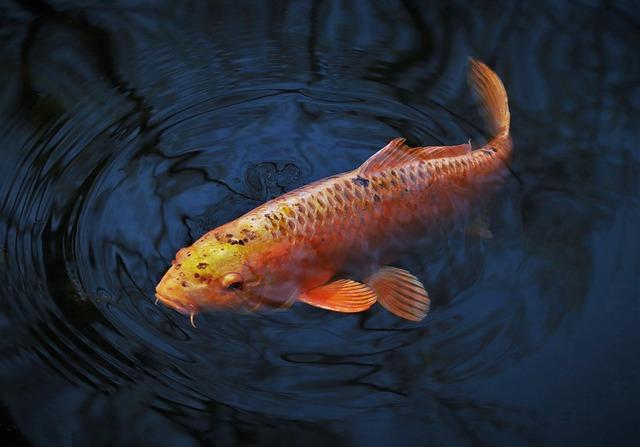- Introduction
- Discovery and Identification of the Wakanda Fish
- Habitat and Distribution of the Wakanda Fish
- Physical Characteristics of the Wakanda Fish
- Significance in Marine Biology
- Conclusion
- FAQs
- References
Introduction
In the remarkable world of marine life, a new addition has sparked global interest — the Wakanda Fish. Named after the fictional nation from Marvel Cinematic Universe's "Black Panther," this newly discovered species is as mysterious as it is fascinating. This article will explore the key elements related to the Wakanda Fish, including its discovery, habitat, physical features, and what it means for the field of marine biology. Let's dive deep into understanding how this striking little fish has become a significant focus in modern scientific research.
First, we will look at the discovery and identification of the Wakanda Fish, describing the exciting moments when scientists first encountered it. Then, we’ll explore where these fish are found and how their unique habitats support their existence. We will also examine the incredible physical traits that make them stand out in the aquatic world. Finally, we will wrap up by discussing the significance of the Wakanda Fish in marine biology, before concluding with FAQs for any lingering questions.
Discovery and Identification of the Wakanda Fish

(Image: Pixabay/@Bergadder)
The Wakanda Fish, scientifically named *Cirrhilabrus wakanda*, was discovered in the coral reefs off the coast of Tanzania in 2019. A group of American ichthyologists first brought this vibrant species to the attention of the scientific community. The fish is a part of the fairy wrasse family, a group of small, colorful fish commonly seen in reef environments.
The researchers were inspired to name the creature after Wakanda, the technologically advanced hidden African nation popularized by Marvel’s "Black Panther." The shimmering violet and blue hues of the Wakanda Fish are reminiscent of the futuristic beauty portrayed in the fictional world of Wakanda, adding yet another layer of fascination to this discovery.
This identification was made through morphological analysis and DNA sequencing, confirming that the species was distinct from its closest relatives. The process took several months of study, but the results left no doubt — a new species had been uncovered.
Habitat and Distribution of the Wakanda Fish

(Image: Pixabay/@AliceKeyStudio)
The Wakanda Fish can be found in the mesophotic coral ecosystems that flourish in the deeper waters off the coast of East Africa, particularly in Tanzania's coral reefs. Mesophotic zones refer to low-light environments, typically located between 30-150 meters deep. These ecosystems are characteristically cooler, which differentiates them from shallower tropical reefs; this allows the fish to thrive in a relatively unexplored environment with less competition and fewer predators.
Mesophotic ecosystems are often called "twilight zones" because of the limited light that reaches these depths. This type of habitat offers an ideal location for the Wakanda Fish, as well as for other species of fairy wrasse, to exist away from the high traffic of tourists and fishing activities. While little is still known about the specific behavior of this species in different habitats, its preference for remote underwater regions suggests that much remains to be discovered.
Because of the isolated nature of these habitats, the precise distribution of the Wakanda Fish may be broader than we currently know. However, it is clear that East African reefs house the largest known concentrations of the species, making them crucial to the continued survival and study of this new organism in the wild.
Physical Characteristics of the Wakanda Fish

(Image: Pixabay/@Pexels)
The most immediately captivating feature of the Wakanda Fish is its extraordinary coloration. Characterized by violet scales with iridescent blue highlights, the appearance is both stunning and rare among reef fishes. The males of the species exhibit even more vibrant coloration compared to females, demonstrating vivid hues which play an important role during mating displays and territorial behaviors.
Another remarkable aspect of the Wakanda Fish is its small size. Adult specimens are typically no longer than 6 centimeters, making them one of the smaller fairy wrasses in the known oceans. Despite their diminutive stature, their bold color patterns allow them to stand out against the backdrop of coral, particularly during interactions with other marine creatures.
Additionally, this species displays a streamlined, sleek body that enables them to navigate effortlessly through complex reef structures and mesophotic environments. Their fins are proportionately large, providing enhanced maneuverability in quick bursts, ideal for avoiding threats or darting through narrow spaces within the reef.
Significance in Marine Biology

(Image: Pixabay/@makabera)
The Wakanda Fish is more than just a biological curiosity; it has quickly become a focus point for ongoing marine studies. Its discovery further emphasizes the importance of exploring mesophotic ecosystems, which remain largely devoid of large-scale human interference and represent key ecological zones that might soon host critical biodiversity hotspots amid environmental challenges such as climate change.
Researchers also hail the Wakanda Fish discovery for significantly expanding the understanding of fish diversity in reef systems. Moreover, it underscores the fact that many marine species remain elusive due to their inhabitation of previously inaccessible areas. Advances in diving technology and exploration techniques are helping scientists reach these depths, uncovering populations that have likely existed without human observation for eons.
Additionally, the Wakanda Fish's striking coloration raises new questions about the role of pigments and visual communication in low-light environments. Studying these behaviors and traits more deeply may yield profound insights into evolutionary adaptations, potentially benefiting broader fields of study, from marine conservation to biotechnology.
Conclusion
The discovery of the Wakanda Fish marks a monumental leap forward in marine exploration and biodiversity science. Not only does it celebrate the uncharted beauty of our oceans’ depths, but also sends a message of hope for future discoveries. Who knows what other captivating creatures are hiding beneath the surface, waiting to unveil their secrets? Scientists are only beginning to scratch the surface.
This new species stands as a testament to the incredible biodiversity present in our coral reefs, reinforcing the importance of conserving these vital ecosystems. As we unravel more details about the Wakanda Fish and similar undersea dwellers, the knowledge gained will undoubtedly shape further research, policies, and conservation practices aimed at protecting our oceans.
FAQs
How was the Wakanda Fish discovered?
A team of American ichthyologists uncovered the Wakanda Fish while exploring coral reefs off the coast of Tanzania in 2019. Using DNA testing, they verified it as a new species.
What makes the Wakanda Fish special?
This species stands out due to its striking color — violet scales with blue iridescent accents — and its residence in mesophotic (low-light) coral reefs, making it unique and lesser-known compared to shallow water marine life.
Where can I find the Wakanda Fish?
The Wakanda Fish is primarily located in East Africa's coral reef habitats, particularly in the deep reef ecosystems off the Tanzanian coast.
Why is it called "Wakanda Fish"?
Scientists were inspired by the vibrant beauty and secrecy of the fictional Wakanda nation in Marvel’s "Black Panther," which reflects the fish’s similarly vivid, somewhat hidden nature in deeper reef waters.
Is the Wakanda Fish endangered?
Currently, there isn't enough data to classify the Wakanda Fish as endangered. However, its natural habitats face threats from climate change and human activity, underscoring a need for preservation and careful monitoring.

